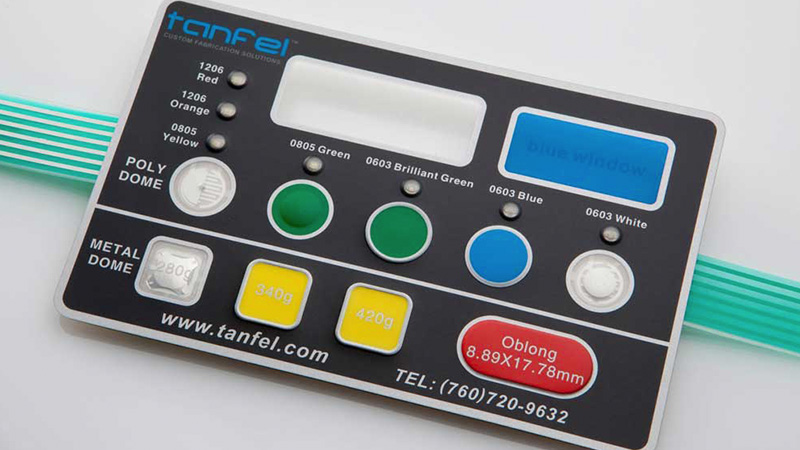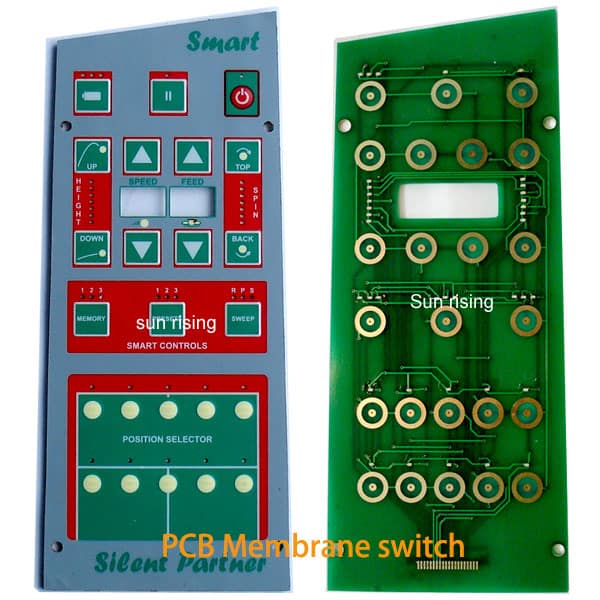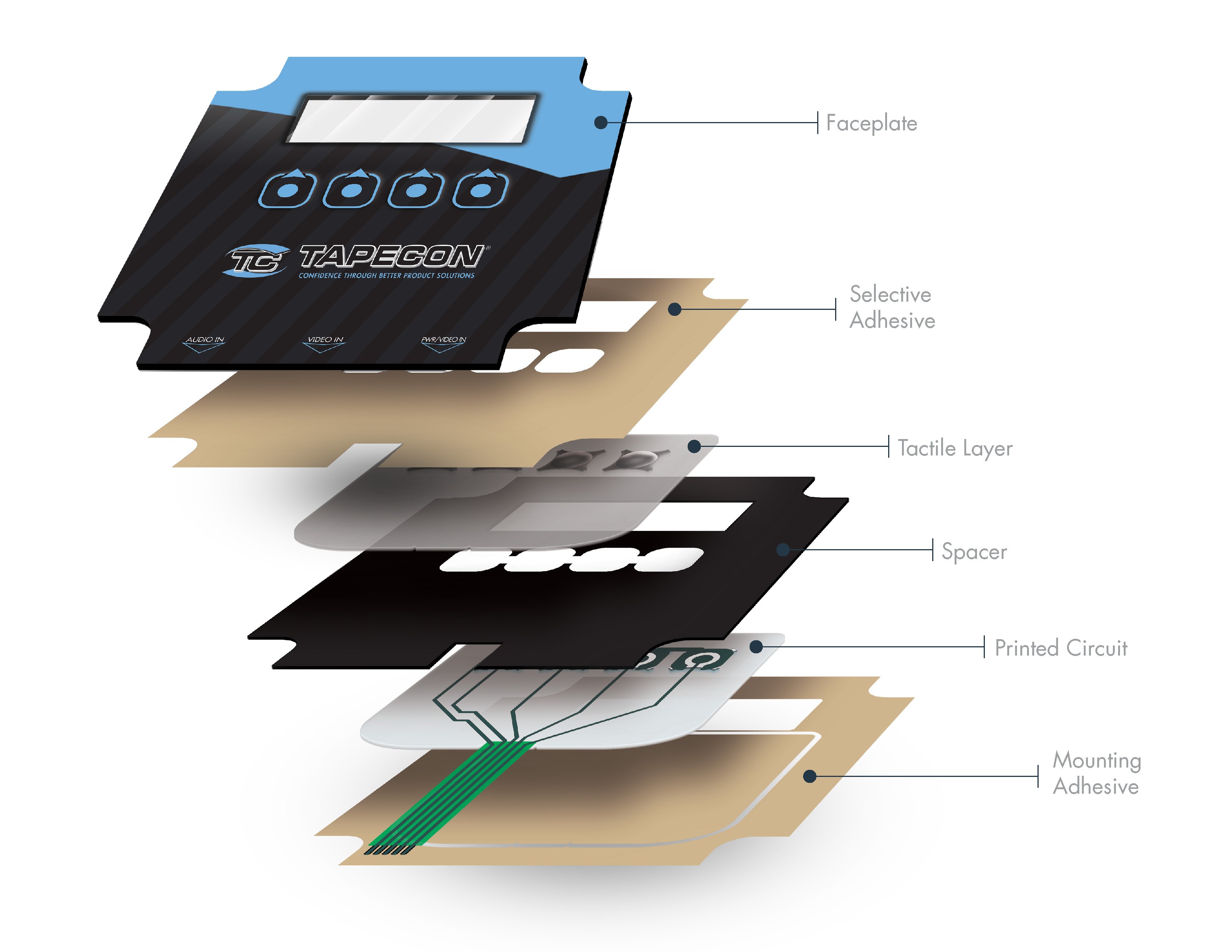Why Membrane Switches Are Critical for Efficient Control in Medical Instruments
Why Membrane Switches Are Critical for Efficient Control in Medical Instruments
Blog Article
Membrane Change Technology: The Key to Reliable and Cost-efficient Interfaces
Membrane button modern technology has emerged as a crucial component in the design of interface, supplying both integrity and cost-effectiveness throughout a varied variety of applications. Its durable building and construction makes sure resistance to ecological obstacles, while the flexibility in style enables customized remedies that fulfill particular market demands. As we check out the complex benefits of membrane buttons, their potential for innovation questions about future applications and evolving trends. What does the next chapter hold for this innovation in an increasingly electronic landscape?
Understanding Membrane Layer Switch Technology
Membrane switch technology is a widely made use of user interface option in numerous electronic devices, offering a seamless mix of capability and style. This modern technology incorporates multiple layers of products, typically being composed of a visuals overlay, spacer layer, and a circuit layer. The graphic overlay presents the user interface components, while the spacer layer divides the circuit layer from the overlay up until an individual activates a button.
When pressure is put on the overlay, the circuit layer finishes the electric circuit, sending out a signal to the device. This mechanism permits different arrangements, including tactile comments and backlighting options, improving individual interaction. Membrane layer buttons are normally produced using sturdy materials such as polyester or polycarbonate, guaranteeing long life and resistance to environmental variables like dampness and dust.
The convenience of membrane layer changes enables their application in diverse sectors, including medical tools, customer electronics, and industrial controls. Their compact layout permits assimilation into space-constrained settings, giving a reliable interface without jeopardizing aesthetic charm. Understanding the intricacies of membrane switch technology is necessary for manufacturers and developers looking for to produce trustworthy and reliable human-machine interfaces.
Secret Advantages of Membrane Layer Switches
While different interface services exist, membrane switches offer distinctive advantages that make them a favored choice in numerous applications. Among the main advantages is their durability; membrane layer switches are made to hold up against harsh ecological problems, consisting of wetness, dust, and temperature changes, ensuring lasting efficiency. This resilience dramatically reduces the requirement for regular replacements, thus decreasing general maintenance costs.

Moreover, membrane layer switches are lightweight and compact, making them suitable for applications where space is limited. Their inconspicuous layout contributes to a sleek appearance without endangering performance.
Cost-effectiveness is additionally a notable benefit, as the manufacturing procedure for membrane changes often tends to be much less costly contrasted to traditional mechanical switches. This price, combined with their dependability and simplicity of installment, positions membrane layer switches as a useful service for a variety of sectors seeking efficient and efficient interface.
Applications Across Different Industries
Just how do membrane layer switches adjust to the diverse demands of various industries? Membrane button modern technology is progressively recognized for its convenience, making it appropriate for a variety of applications across numerous markets. In the clinical field, membrane switches are made use of in analysis devices and person surveillance tools, where their longevity and ease of cleansing are essential for keeping hygiene standards. The automotive market utilizes these switches in dashboards and control board, providing a structured visual while ensuring straightforward operation.
In consumer electronics, membrane layer switches offer a portable solution for push-button controls and home devices, boosting individual experience via intuitive style. Furthermore, you could try this out the industrial sector leverages membrane layer switches for equipment control board, taking advantage of their resistance to severe settings, such as wetness and dust.
Army and aerospace applications also use membrane layer switches for their dependability and ability to endure extreme problems, guaranteeing functional performance in critical circumstances. In addition, the food and beverage industry adopts these buttons for automated systems, where cleanliness and convenience of operation are paramount. Ultimately, membrane layer switches are tailored to fulfill the one-of-a-kind needs of each industry, confirming their crucial duty in modern-day technology interfaces
Style and Customization Alternatives

In the world of membrane button innovation, style and customization alternatives play an essential function in enhancing functionality and user interaction. These buttons can be tailored to satisfy certain operational requirements and aesthetic choices, making them functional parts in numerous applications.
Among the key customization choices is the layout of the switch itself, which can be designed to suit unique user interfaces and ergonomic considerations. By changing the shape, dimension, and setup of buttons, suppliers can create instinctive layouts that help with simplicity of usage. In addition, the incorporation of different shades and visuals overlays enables branding and improved presence, making sure that customers can promptly determine functions.
In addition, membrane layer switches can be engineered with various responsive feedback systems, such as elevated buttons or distinct clicks, to boost the user experience. Various materials can also be chosen for longevity and environmental resistance, dealing with elements such as wetness, you could check here temperature variations, and chemical direct exposure.
Ultimately, the extensive layout and customization choices offered in his comment is here membrane layer switch innovation empower businesses to create tailored options that not only fulfill useful demands however likewise line up with their branding and operational demands.

Future Fads in Membrane Buttons
As membrane switch technology remains to evolve, future fads are significantly concentrated on improving user experience and incorporating innovative performances. One considerable fad is the integration of touch-sensitive and capacitive technologies right into traditional membrane buttons. This development permits even more intuitive interface, supplying responsive responses while preserving a smooth style.
One more emerging trend is making use of eco-friendly products, driven by the expanding demand for sustainable production practices. Suppliers are looking for to decrease their carbon footprint by making use of recyclable substratums and low-impact inks, straightening with worldwide sustainability goals.
Furthermore, the rise of the Net of Points (IoT) is triggering the consolidation of clever features into membrane switches. Improved connectivity alternatives will certainly allow devices to interact with each other, permitting smooth combination into more comprehensive systems.
Furthermore, improvements in printing technologies, such as digital printing, are enabling higher layout versatility and personalization. This makes it possible for suppliers to create intricate layouts and dynamic shades cost-effectively.

Conclusion
In verdict, membrane switch innovation stands for a vital advancement in user interface style, offering considerable benefits in durability, personalization, and cost-effectiveness. As improvements continue to emerge, especially in touch-sensitive interfaces and lasting products, the potential for membrane switches to boost user experience and performance continues to be encouraging.
Report this page